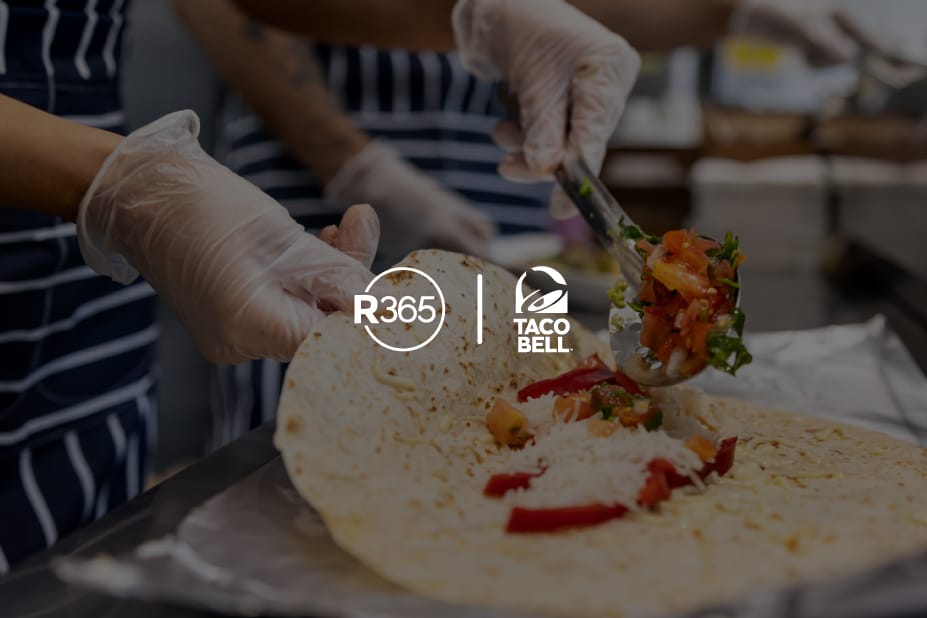Several challenges arise as your restaurant company grows, whether from one to two locations or from 20 to 30. Among them is the need for an even larger cadre of managers, new real estate, and perhaps new vendor relationships to supply your thriving business.
One important element of effective restaurant management that seems simple until a company begins to scale is the need to account, individually and in aggregate, for all the transactions between your different operations. In short, the need for intercompany accounting arises quickly and urgently.
What is intercompany accounting?
Intercompany accounting is the recording of financial transactions between different legal entities of the same parent company. Since the entities are related, the transactions between them are not independent, and companies cannot include a profit or loss from these transactions on consolidated financial statements.
Why is intercompany accounting important for restaurants?
Most multi-unit restaurant groups run each location as a separate legal entity. Each entity has its own P&L and balance sheet. If all entities are under a holding company, the GAAP financial statements should ideally be consolidated to provide an accurate picture of overall business performance.
The challenge for restaurant groups is that most accounting software can’t handle multiple entities in a single database. This requires accounting teams to undertake the Herculean task of manually inputting due to/from entries individually for each restaurant location. This time-consuming and error-prone process never ends and struggles to provide a clear snapshot of the business.
For more great tips check out our other blogs:
- The essential guide to modern restaurant accounting
- Learn how to calculate food cost percentage
- Learn how to read and profit-and-loss statement
- Learn how to master menu engineering to make your menu a moneymaker
What are examples of intercompany transactions?
One of the essential elements of intercompany accounting is intercompany eliminations. These remove net-zero transactions between related companies from consolidated financial statements. The two most common types of intercompany eliminations in restaurant intercompany accounting are intercompany debt and revenue and expenses.
Intercompany debt
This eliminates any loans made from one entity to another within the group. This offsets notes payable and receivable, as well as interest expenses and income. This issue commonly arises when funds move between entities from a centralized treasury department at the parent company.
Intercompany revenue and expenses
This is the elimination of the sale of goods or services from one entity to another within the group. Consequently, the related revenues, Cost of Goods Sold, and profits are eliminated. A company, of course, cannot and would not want to recognize revenue from sales to itself.
Intercompany accounting best practices
Manually managing intercompany transactions is labor-intensive and costly. Reconciling large volumes of data is often hampered by limited cross-entity visibility. Intercompany accounting is a critical process that growing restaurant operators must get right. If not done correctly, it can adversely affect the preparation of your company’s consolidated financial statements. The following best practices for intercompany accounting will make this process more straightforward and hassle-free.
Intercompany account process flow: Due to/from accounts
Assume you have two locations, and each is owned by a different legal entity:
Location A is owned by LE1 & Location B is owned by LE2.
Let’s assume a vendor delivers $60 of goods to Location A and $40 of goods to Location B but then sends one consolidated invoice for $100. If the invoice is entered at Location A, then Location B should owe Location A for its $40 expense. On the invoice, Location A will be the location in the header, and then there should be two detail rows, one for Location A for $60 and one for Location B for $40. The distribution without intercompany would be as shown below.
Total debits and credits must balance for each legal entity, so the example above is out of balance.
Total debit for LE1 = $60 and total credit = $100.
Total debit for LE2 = $40 and total credit = 0.
LE2 needs a $40 credit, and LE1 needs a $40 debit to balance out.
Here’s where due to and due from entries come in. There must be intercompany rows to balance the entry and show that LE2 owes LE1 $40. Now debits and credits match, and the transaction is balanced.
There are two methods to choose from when setting up due to/from accounts on a legal entity. (Method 2 is the best practice.)
Method 1: Use separate due to and due from accounts for each legal entity. In our example, we’d put an account named “Due from LE1” in the due from account field and “Due to LE1” in the due to account field.
Pros: This method provides the most detail because each legal entity will have its own due from and due to accounts. They will show up separately on a balance sheet.
Cons: Requires setting up more accounts in your GL, makes reports like the balance sheet longer because they must show each account. More importantly, the due from and due to account balances grow over time, and at some point, you should do an adjusting journal entry to cancel them out against each other.
Method 2: Use the same account in both due to and due from account fields per each legal entity. In the example on LE1, you’d put one account named “Due To/From LE1” in both fields.
Pros: This simplifies managing balances because you use the same account for due to and due from. As they are debited and credited, they cancel each other out without requiring the user to manually adjust the balance as described in the cons of Method 1 above. This also halves the number of intercompany accounts, which is easier to set up and makes reports shorter.
Cons: Slightly less visibility to see due-to and due-from balances separately.
Implement continuous close
The closing process is time-consuming and cumbersome. While continuous close — converting period-end closing tasks into day-to-day activities over an accounting period — may seem counterintuitive to period closing, many accounting teams are now increasingly adopting this approach because of various advantages.
First, matching and reconciling weeks-old transactions are more error-prone than doing them continuously. Additionally, by spreading hectic intercompany tasks throughout an accounting period, your accounting team can avoid the workload surge at the period’s end.
Standardize Restaurant Accounting Procedures
One of the major accounting issues restaurant groups face is the variety of reporting practices used by each legal entity under it. It is critical to standardize practices and policies that detail every step of your accounting process and how to collect, tag, and store transactional information. This will allow your accounting teams to organize and file your financial reports much more efficiently while lowering the risk of error.
Operators of dispersed restaurant companies must account for the differences between local laws that could make standardized policies too vague. However, intercompany reporting and management policies are much easier to enforce across the entire company.
Centralize your documents
Centralized document management is another essential aspect of intercompany accounting. In many cases, enterprises have their transaction documents, such as invoices, contracts, and purchase orders, isolated in different systems, making reconciliation discrepancies difficult to fix. A central repository for all intercompany records streamlines recordkeeping.
Using one database for intercompany bookkeeping and accounting data saves time and minimizes the potential for errors. An accounting system with a central database allows you to upload a long database spreadsheet into the system with one click rather than typing out thousands of lines of transactions. Finally, a centralized database facilitates streamlined reporting. Modern restaurant accounting software with one database for multiple locations allows reporting for 100 restaurants to be done in the same time it would take for one.
Use AP Automation across your company
Accounts payable is a critical business function to keep restaurant operations flowing smoothly while ensuring your food and beverage vendors are paid on time. Inefficient AP processes are often a drain on accounting resources. A restaurant-specific AP automation solution streamlines accounts payable, no matter the number of locations.
AP automation virtually eliminates time-consuming, error-prone data entry and allows your store managers to focus on customer service and front-of-house operations. Getting an invoice through a manual accounts payable system can be arduous. A manual data entry mistake can result in hours spent tracking down the error’s cause, and invoice errors can consume your restaurant’s profit margin. By virtually eliminating manual data entry and streamlining approval processes, AP automation can cut days off your monthly invoice processing time. Leveraging AP automation enables your accounting team to upload invoices from multiple locations to the cloud, process them, and approve them.
AP automation can also help verify vendor contract pricing. Vendor errors originating from suppliers’ invoices can be harder to manage than internal mistakes. Automated AP empowers you to track price fluctuation, enabling you to hold vendors accountable without requiring verification between accounting staff and store-level managers. With all invoices in a central system with accurate line-item details, you can also set variance alerts to gain insight into real-time food costs. Armed with this information, the operations team can act quickly to fix these errors without waiting on the accounting team for details.
Streamline account reconciliation
For most accounting teams, reconciliation is the most dreaded part of the monthly financial close. Since reconciliations are often manual, involve multiple people, and can require thousands of reconciliations, the opportunity to reduce time and resource requirements is significant.
Automation fully integrates account reconciliation into the financial close and supports monitoring, reporting, and analysis. In addition to streamlining the process, an automated reconciliation also improves data security.
Use an integrated Restaurant Enterprise Management platform
Many restaurants manage their accounting and other back-end operations with antiquated, standalone generic software. Accounting software is often disconnected from the scheduling, inventory, and point-of-sale (POS) systems reporting software. Data is gathered separately and imported — or worse yet, entered manually — in a mundane, error-prone, and time-consuming process.
Among the most critical integrations is your POS software with your accounting platform, which lets you centralize data collection about daily sales and labor across your locations. Eliminating manual POS data entry streamlines GL input and reduces errors. Automatically pulling POS data and creating sales and labor journal entries ensures accurate data and saves time for your store managers and bookkeeping team.
An end-to-end, integrated Restaurant Enterprise Management (REM) solution automates nearly all accounting-related functions and can dramatically reduce your accounting team’s day-to-day workload. A combined view of financial information reduces errors and improves data integrity. All financial information and reports, including the general ledger, budgets and forecasts, bank reconciliations, and accounts payable/receivable statements, are available from a dashboard. You can drill down into the performance of all your locations individually and side-by-side using standardized templates or create your own customized dashboards.
With a REM system, you can run reports for accounting, inventory, banking, daily sales, labor analytics, food costs, and recipes to identify potential problem areas and improvement opportunities at each location. More advanced systems can also import sales mix data directly from your POS system, allowing you to compare costs to sales and then use those results to make informed menu decisions to increase sales of higher-margin items. You can also aggregate labor data from the POS system, allowing you to compare scheduled to actual numbers, get a payroll accrual journal entry, and compare daily P&Ls in relation to labor costs.
Conclusion
Most accounting software is not set up to handle multiple entities in a single database, thus requiring the time-consuming and error-prone process of manually managing intercompany transactions for each restaurant location.
However, in a cloud-based, restaurant-specific accounting system, intercompany entries are automated, increasing accuracy, saving hours of weekly accounting time, and setting your restaurant company on a path for efficient, profitable growth.



